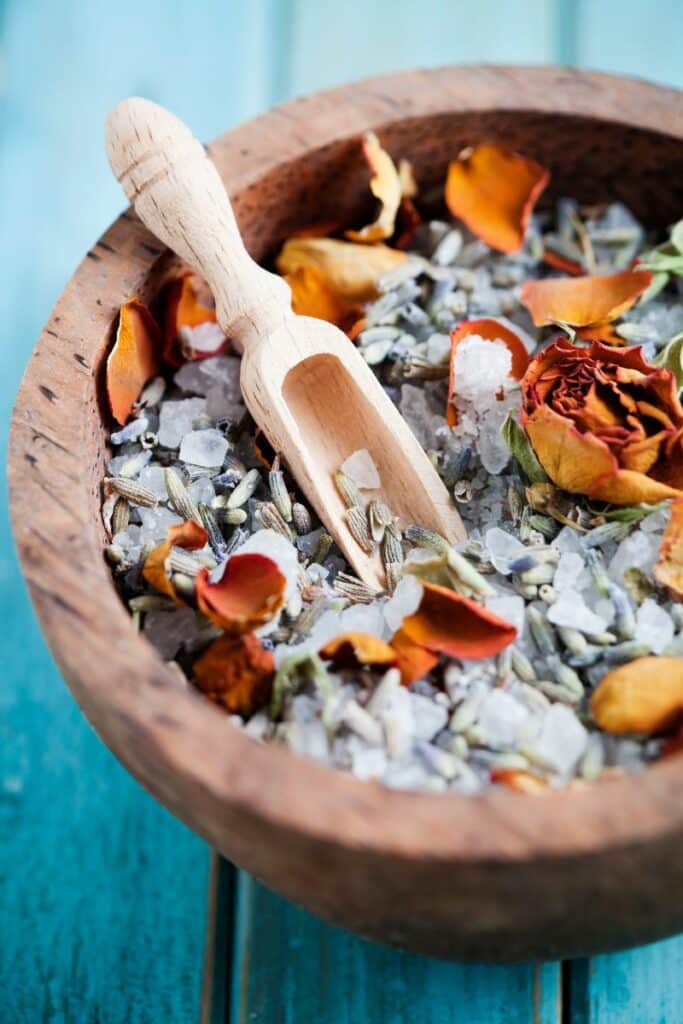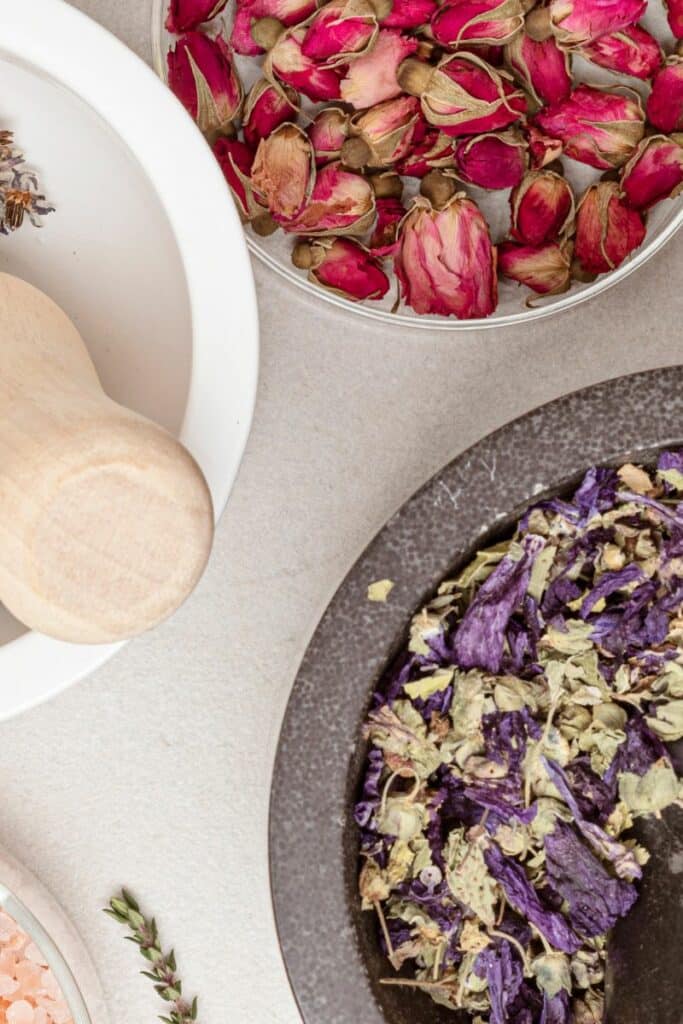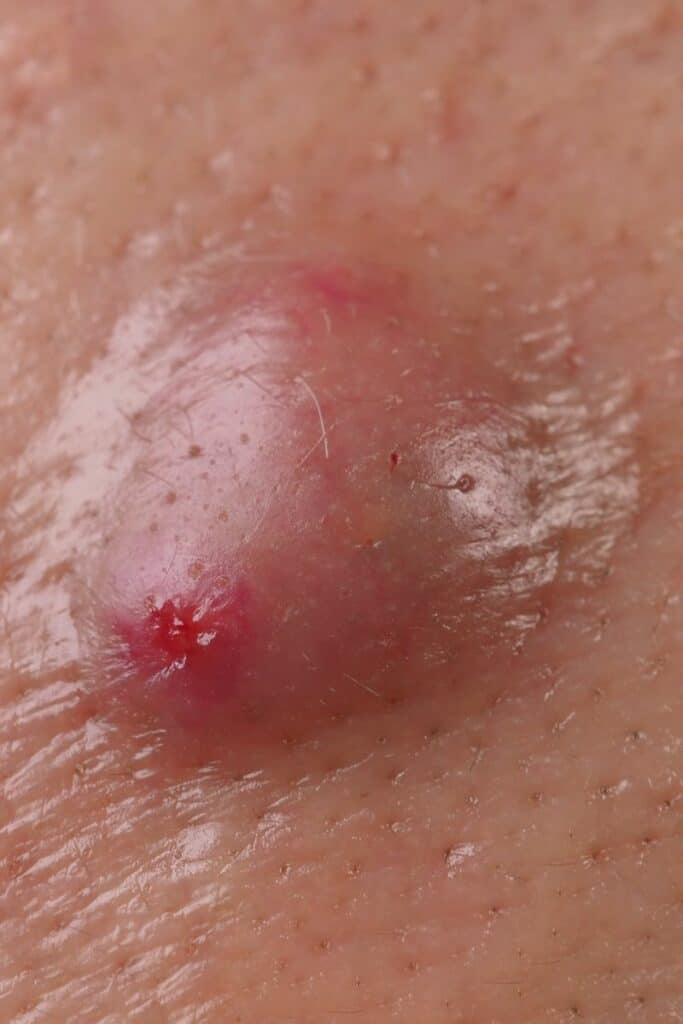Simple Sitz Bath Recipe For Bartholin Cyst Remedy
Dealing with a Bartholin gland cyst can be a frustrating and uncomfortable experience, but a simple Sitz Bath Recipe for Bartholin Cyst relief can help ease the discomfort naturally.

Disclaimer: This is not medical advice. Information and statements shown here are for educational and informational purposes only and are not to replace the advice of your healthcare professional.
This post may include affiliate links. Please refer to our disclaimer for full disclosure.
Sitz baths, which involve sitting in a shallow bath with a few inches of warm water, can reduce swelling, promote blood circulation, and soothe the affected area. This home treatment is especially effective for those looking to avoid more invasive options like surgical procedures involving a small incision or the use of a small rubber tube for drainage.
Using a plastic sitz bath that fits over a toilet seat or your own bathtub, you can easily prepare a soothing bath with the right water temperature and optional additions like apple cider vinegar or antimicrobial herbs. This method is often recommended by healthcare professionals as a first-line treatment option for this medical condition.
In some cases, if symptoms like severe pain, fever, or signs of infection arise, immediate medical care or advice from a health care provider is essential. For many, though, this gentle at-home remedy offers significant relief within a couple of days and is a low-risk way to manage symptoms effectively.

Why Use a Sitz Bath for a Bartholin Cyst?
A warm sitz bath is one of the best natural remedies for managing a Bartholin cyst. Sitting in a shallow basin or 2-3 inches of warm water helps:
- Improve Blood Flow: The warm water boosts circulation, which can help reduce swelling and promote faster healing.
- Ease Discomfort: Warmth soothes the perineal area and helps reduce pain.
- Encourage Drainage: Consistent sitz baths can soften the cyst, helping it drain naturally through a small opening.
A sitz bath is a simple and effective home remedy for relieving the symptoms of a Bartholin's cyst. It involves sitting in a shallow basin with a few inches of warm water, which can provide many benefits for the affected area.
Sitz baths help reduce inflammation and swelling by improving blood flow to the perineal area. This increased circulation can also promote faster healing. The warm water eases pain and discomfort, making it easier to go about daily activities like sitting or walking. For added benefits, antimicrobial herbs can be included in the bath to help fight infection and reduce the risk of complications.
Sitz baths are a good idea because they are safe, easy to prepare, and gentle on the body. You can use a small plastic tub, sitz bath kit, or even your own bathtub to create a warm sitz bath at home. This simple treatment can provide significant relief and help the cyst drain naturally, avoiding the need for medical treatments like a small incision or surgical drainage.
With consistent use, a sitz bath can be a powerful home remedy for reducing discomfort and helping your body heal.
What is a Bartholin Cyst?
The Bartholin glands are small, pea-sized glands located on each side of the vaginal opening. Their main job is to produce fluid that helps keep the vaginal area lubricated, especially during activities like sexual intercourse. These glands usually go unnoticed, but when their openings become blocked, a Bartholin cyst can form.
When the gland is blocked, fluid builds up, creating a small Bartholin cyst that can grow over time. The size of the cyst can range from a tiny bump to a larger swelling. In most cases, these cysts are painless, but if they become infected, they can turn into a Bartholin abscess, which may cause redness, tenderness, and even fever.

What Causes a Bartholin Cyst
Blockages can happen for many reasons, including infection in the genital area or surrounding tissues, irritation from friction or tight clothing, or vaginal infections caused by bacteria or STIs. If bacteria enter the gland, there is a higher chance of infection, which can lead to an abscess.
Common Symptoms
- Swelling or a lump near the opening of the vagina
- Tenderness or pain in the perineal area, especially when sitting or walking
- Discomfort during bowel movements or daily activities
- If the cyst becomes infected, symptoms may include pus, fever, and significant pain
When to Consult a Healthcare Provider
While many Bartholin cysts can be treated with home remedies like a warm sitz bath, you should see a healthcare provider if the cyst becomes very large or painful, symptoms worsen with fever or increased swelling, the cyst does not improve after a few days of at-home care, or you experience recurring cysts. Recurring cysts may need further medical treatment like a small incision or surgical drainage under local anesthesia.
If you suspect an infection or experience severe symptoms, seek medical care to avoid complications.

Key Herbs for a Sitz Bath
Adding herbs to your sitz bath can make it even more soothing and effective. Here are the key herbs used in the recipe and how they help:
- Calendula: Known for its ability to calm irritated tissue and fight bacteria, calendula is a gentle herb that promotes healing and reduces the risk of infection.
- Chamomile: Chamomile is soothing and helps reduce redness, inflammation, and discomfort in the perineal area.
- Yarrow: Yarrow supports healing by reducing swelling and improving blood flow to the affected area.
- Plantain: A natural pain reliever, plantain calms sensitive skin and helps ease irritation.
- Lavender: Lavender relaxes tissues, supports healing, and has antimicrobial properties to help fight bacteria.
- Rosemary: This herb boosts circulation, which promotes healing, and has antibacterial benefits to reduce the risk of infection.
For extra relief, you can also add Epsom salt to the sitz bath. Epsom salt helps reduce swelling, soothes sore tissues, and enhances the overall calming effect of the bath.
These herbs and Epsom salt work together to provide a soothing, natural remedy for Bartholin's cysts.
Simple Sitz Bath Recipe for Bartholin Cysts
Ingredients
- 2 Tbsp Calendula flowers
- 2 Tbsp Chamomile flowers
- 1 Tbsp Yarrow leaves and flowers
- 1 Tbsp Plantain leaves
- Optional: 1-2 tablespoons Epsom salt
Instructions
- Combine the herbs in a large bowl and pour 6-8 cups of boiling water over them.
- Cover and let steep for at least 30 minutes.
- Strain the infusion into a clean sitz bath or basin filled with warm water.
- Sit in the bath for 15-20 minutes, ensuring the affected area is fully submerged.
- Repeat 1-2 times daily until symptoms improve.
Tips for Using a Sitz Bath Effectively
- Use Warm Water: Always use warm water, not hot, to avoid irritating the sensitive perineal area. The water should feel comfortable, not scalding.
- Make it Part of Your Routine: For consistent relief, include a sitz bath in your daily routine. Aim for at least one or two sessions each day until symptoms improve.
- Wear Loose Clothing: After the bath, wear loose, breathable clothing to allow air circulation and reduce moisture build-up, which can help prevent further irritation.
- Stay Hydrated: Drink plenty of water to support your body’s natural healing process. Staying hydrated helps improve circulation and keeps your skin healthy.
These simple tips can make your sitz bath more effective and speed up healing for a Bartholin's cyst.
Don't Want To Make It Yourself?
Get this pre-made herbal bath blend that uses the herbs from this article!
FAQs About Sitz Baths for Bartholin Cysts
How often should I use a sitz bath for a Bartholin cyst?
You should use a sitz bath 1-2 times daily until symptoms improve, which typically takes a few days to a week.
Can I use a sitz bath if my Bartholin cyst is infected?
Yes, sitz baths can help reduce infection-related swelling and provide relief. However, if you experience severe pain, fever, or pus, consult a healthcare provider for further evaluation and treatment.
Are sitz baths safe during pregnancy?
Sitz baths are generally safe during pregnancy, but always check with your healthcare provider before using herbal remedies. Rosemary should be avoided during pregnancy, but gentler herbs like calendula, chamomile, yarrow, and plantain are safer options.
Can I reuse the herbal mixture?
You can reuse the herbal mixture once by pouring boiling water over it and straining it into the bath again within 1-2 hours. After this timeframe, discard the used herbs to avoid contamination or reduced potency.
How long does it take for a sitz bath to work?
Relief from discomfort is often noticeable after the first bath, but consistent use is essential for reducing swelling and promoting healing. Aim for regular sitz baths over several days for the best results.

Conclusion
A sitz bath is a simple and effective way to relieve the discomfort of a Bartholin cyst. By improving blood flow, reducing swelling, and soothing the perineal area, this natural remedy promotes healing without the need for invasive procedures. The addition of calming and antimicrobial herbs enhances its benefits, making it a gentle yet powerful option for at-home care.
If you’re dealing with a Bartholin cyst, try the sitz bath recipe shared in this article and incorporate it into your self-care routine. It’s a small, relaxing step that can make a big difference in your comfort and recovery.



